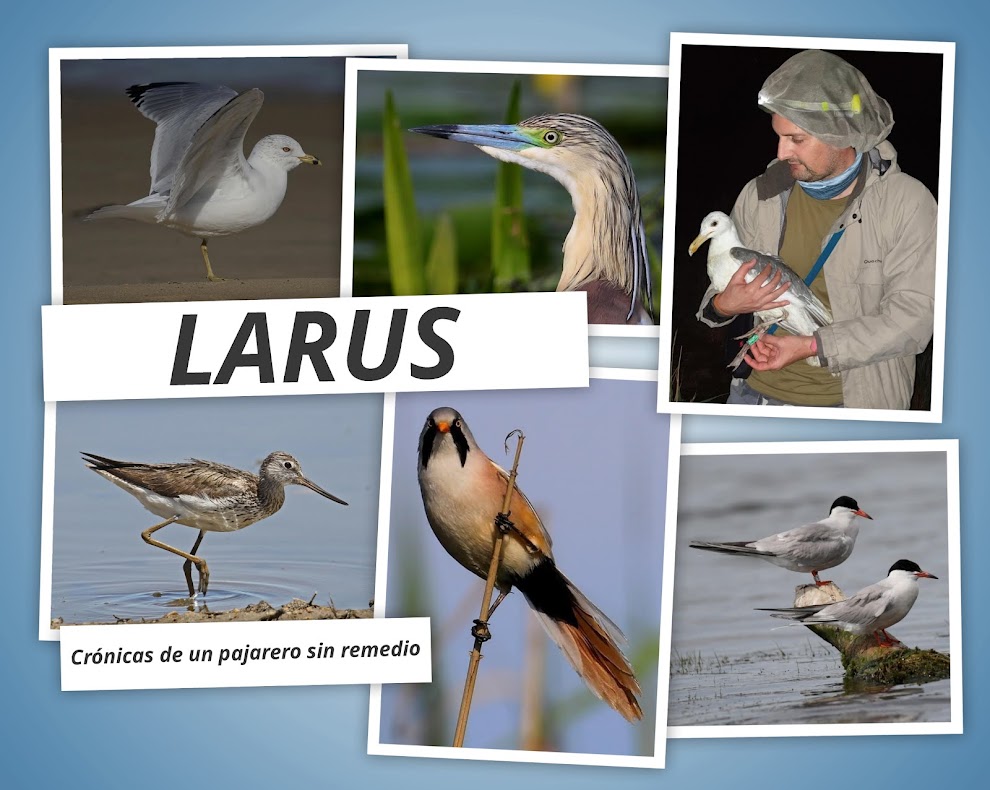I'm back to Varna (Bulgaria). Last January amazing records forced me to visit this city again. This time not only for gull stuff, but enough time to try...
Bad news: high temperatures last days, averaging 15ºC, suggested me no Caspians on the beaches. And, unfortunately, I was right. Small numbers of gulls around, only Yellow-Legged and Black-Headed. At least 3 1cy Caspian well observed (one of them severely injuried) and 2 other putative hybrids.
Anyway, nice close pics, very good days in Bulgaria (as usual) and the promise to be back probably next January. More Caspians, and my very best objective, the ghost of the eastern shores: the Greater Black-Headed Gull
Larus ichthyaetus. Next time only for gull activities. Pure gulling!
I would like to thank my friends
Mitko Georgiev (from
Neophron tours) and
Vesko Valev for making this possible.

Sunrises at Varna city shore.
Varna landfill. About 3.000 large gulls, mostly YLG. No Caspians observed.
Balchik, close to Varna. The harbour and nearby shores were totally empty of gulls.
BHG at Varna shores. At the bottom right, the big city harbour.
Gulls were distrustfull due to people invading the beaches, walking the dog or simply wandering to enjoy the warm weather. Not a good business for birding, of course.

Albena - Golden Sands resort. Only one gull around, and it was an injured 1cy Caspian. See below:
Caspian Gull Larus cachinnans 1cy, with a missing leg.
 Caspian Gull Larus cachinnans
Caspian Gull Larus cachinnans 1cy. Varna.
And what about this beauty? Jizz is perfect for Caspian, but plumage features could be shared with a hybrid cachinnans x michahellis.
Underwing is rather dark, but gently falls within the range of
cachinnans.
At the bottom, a typical 1cy michahellis.
Primary pattern clearly shows very pale lozenges in P2-P3. This feature is shared with michahellis, but averages more marked in cachinnans.
For me, this bird is a pure cahinnans or, less probable, a hybrid with michahellis. But, anyway, cachinnans genes are obviously showed in upper and next photos.
Plain grey scapulars with thin dark centers are perfect for cachi.
-----------------------------------------
And now let's go with some Eastern Yellow-Legged Gulls
Larus michahellis:


1cy bird with a very advanced moult. Most os visible feathers has been replaced, including upper tertials, median coverts, outer greater coverts and scapulars.
Note the hint of pale lozenges on inner primaries and the withish underwing.
This bird coul be perfectly a dark cachinnans, but striked head and dark new outer coverts suggest michahellis, in my opinion.
Wow, eastern michahellis has a very similar primary pattern to cachinnans. Black is scarce on wingtip, but note the black tip on P10.
Adult with retarded moult for this date. Worn old secondaries and 2 outer primaries. Tail is still old generation and looks very abraded.
Another well advanced 1cy bird.
Look at these two birds. Some Eastern YLG shows a cachinnans jizz!
On the left, a "cachinnans-type" 1cy michahellis (could we rule out a
hybrid?). The right bird is typical.
Perfect "Venetian Blind" effect on this michahellis!

Bird with an injuried left wing. Was unable to fly.


Two central rectrices replaced.
Back to Varna next January?
¬¬









































































